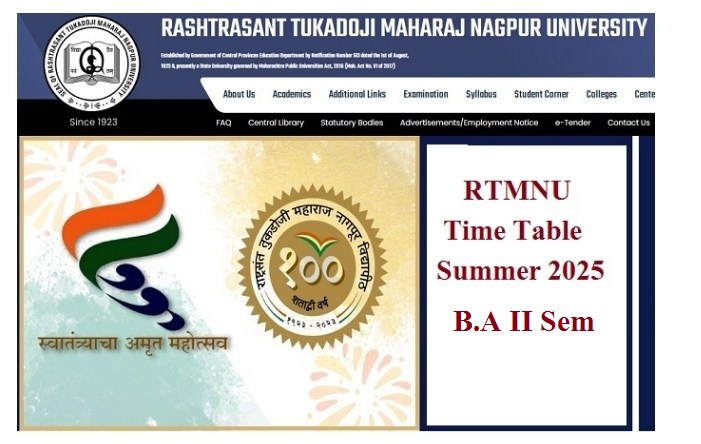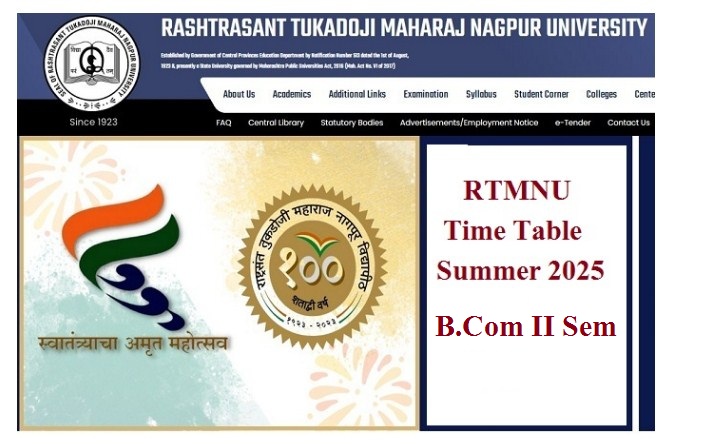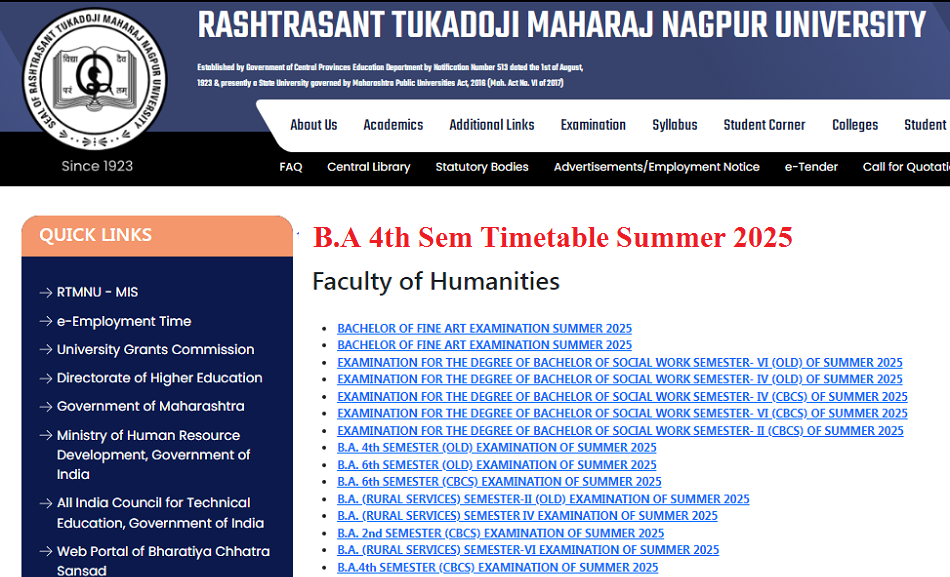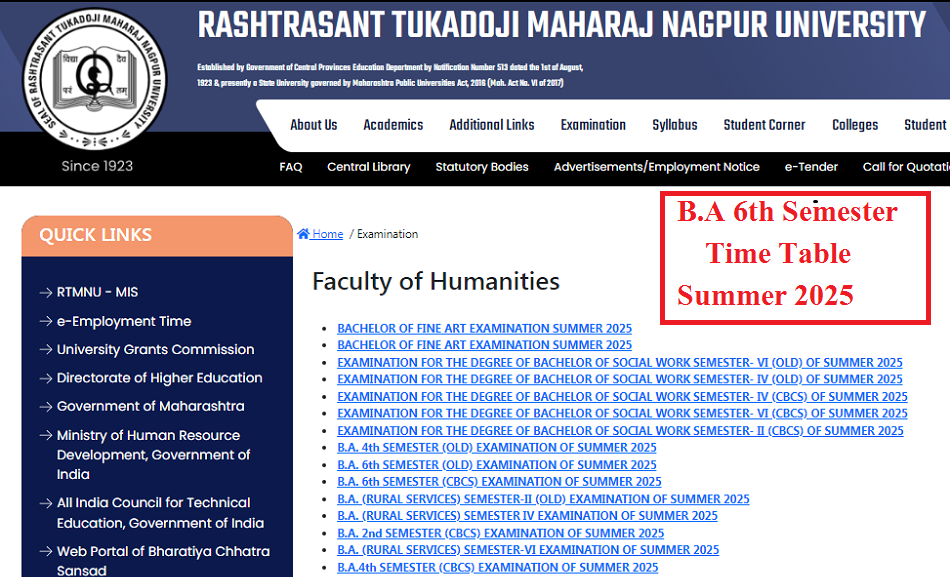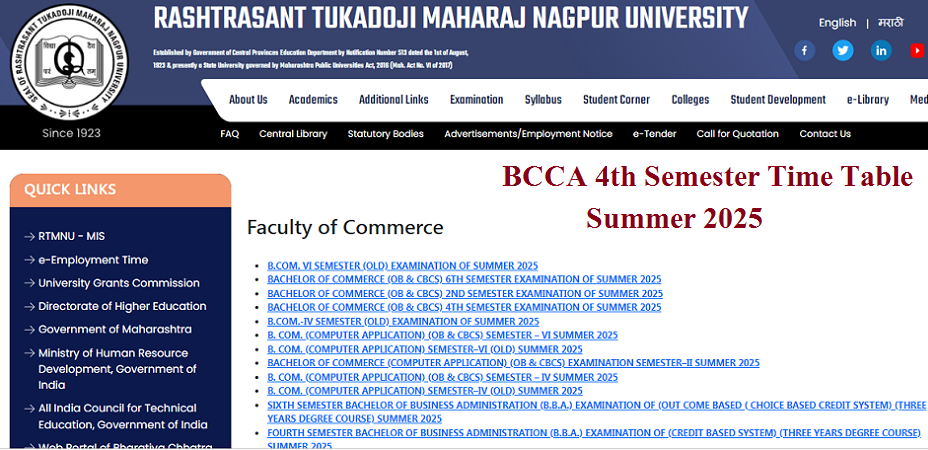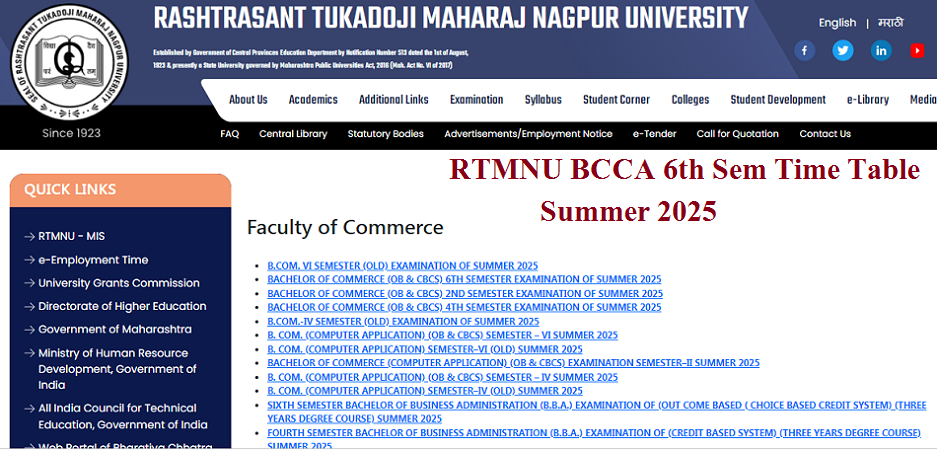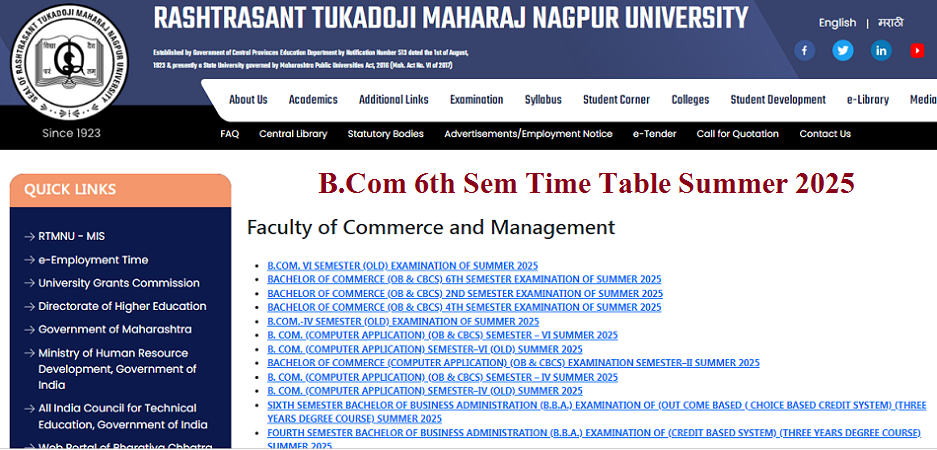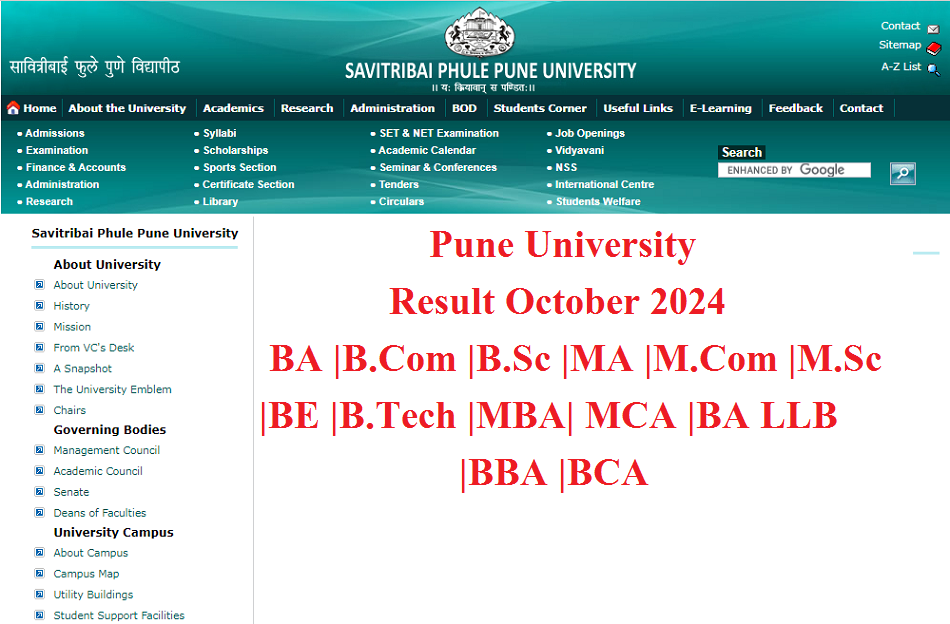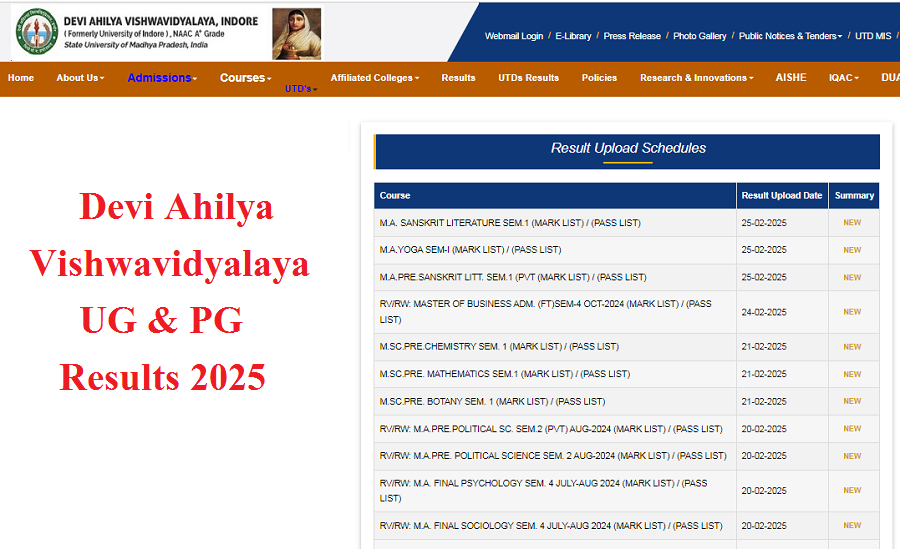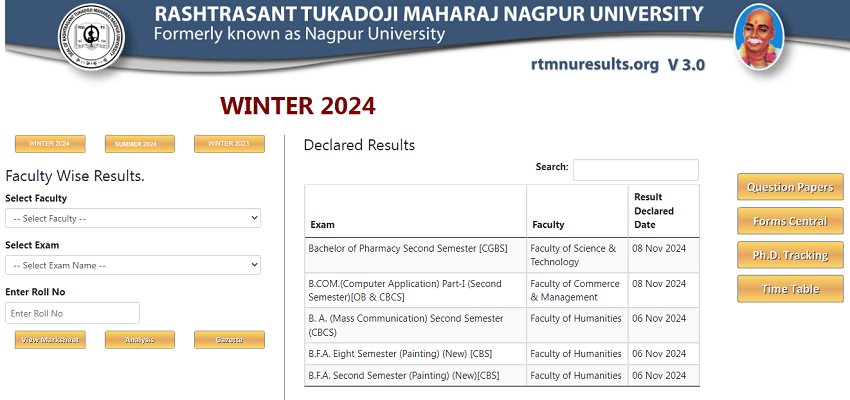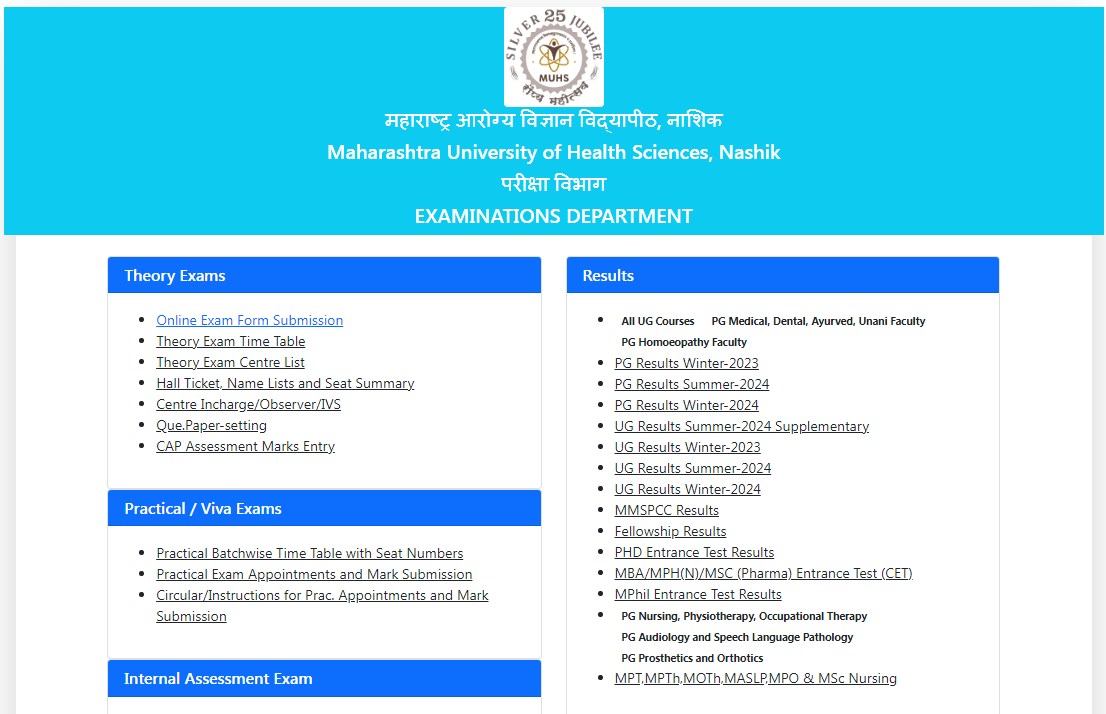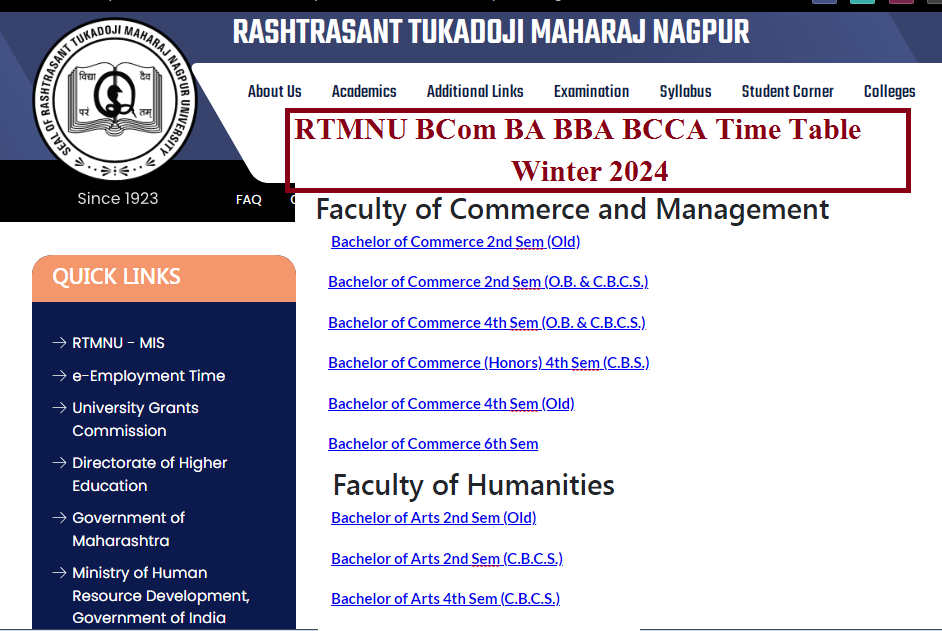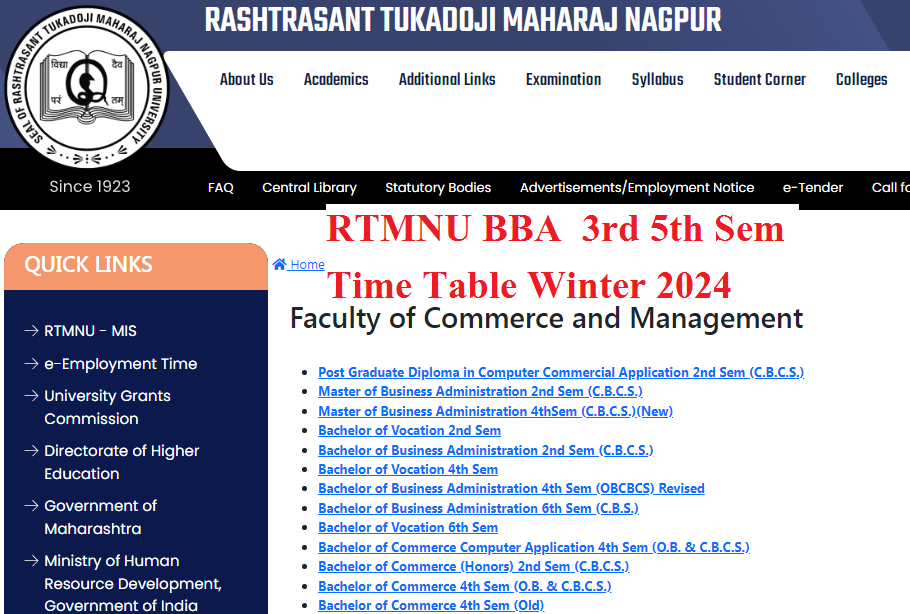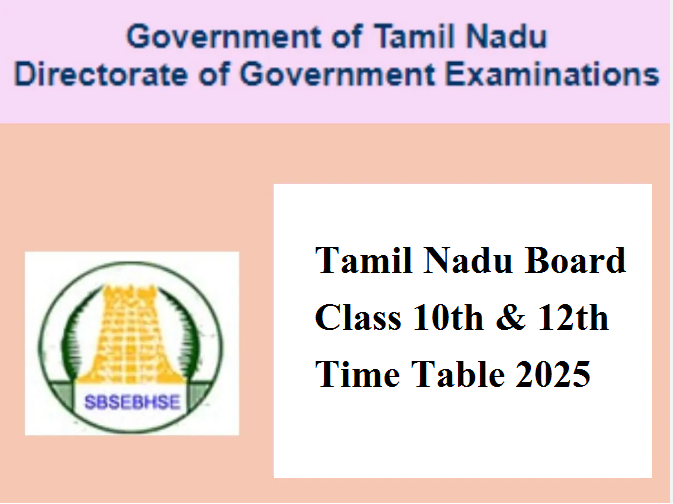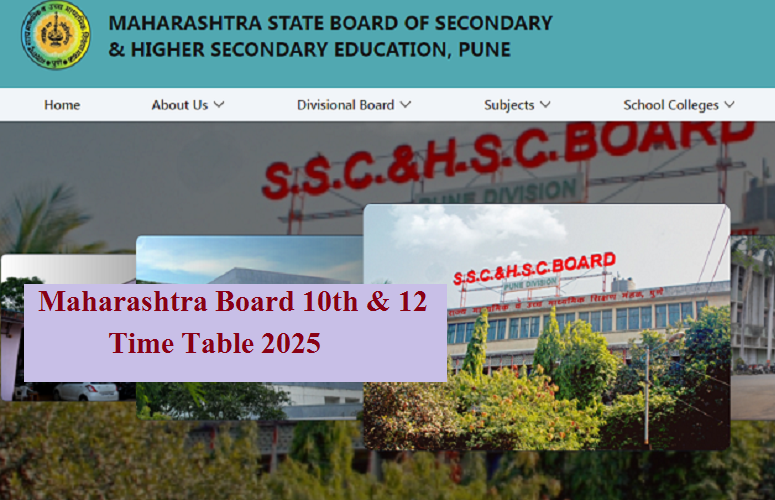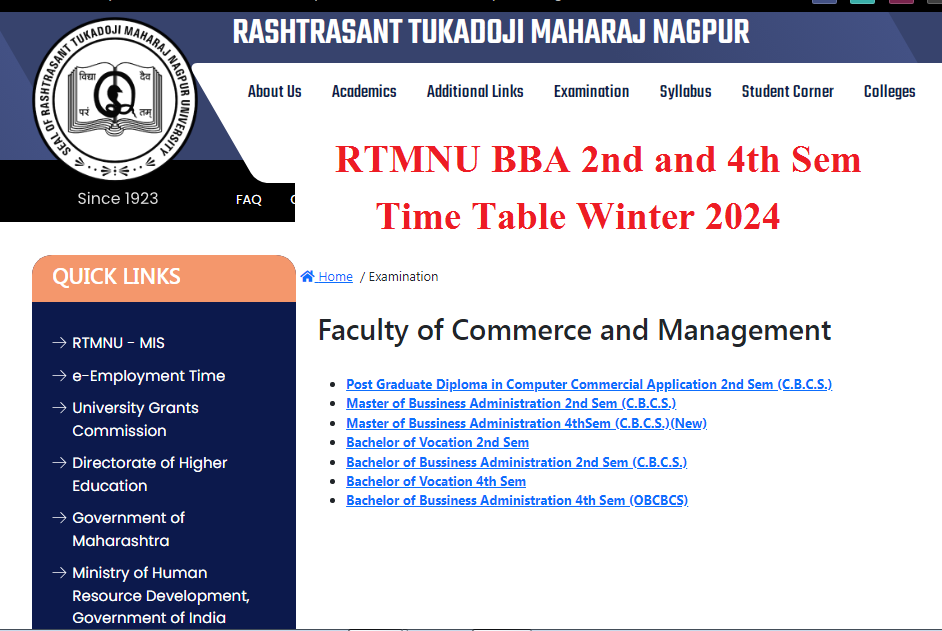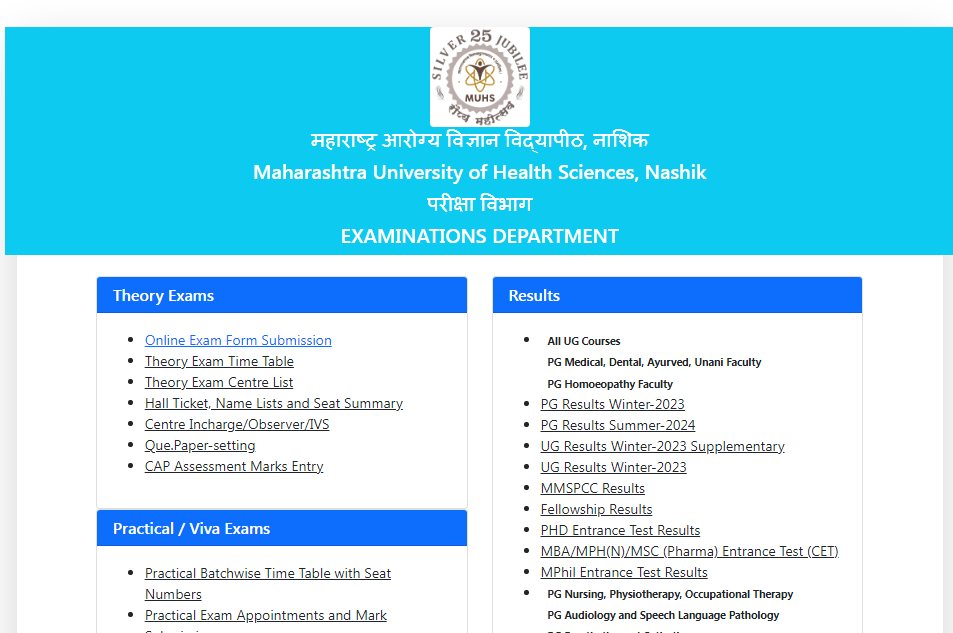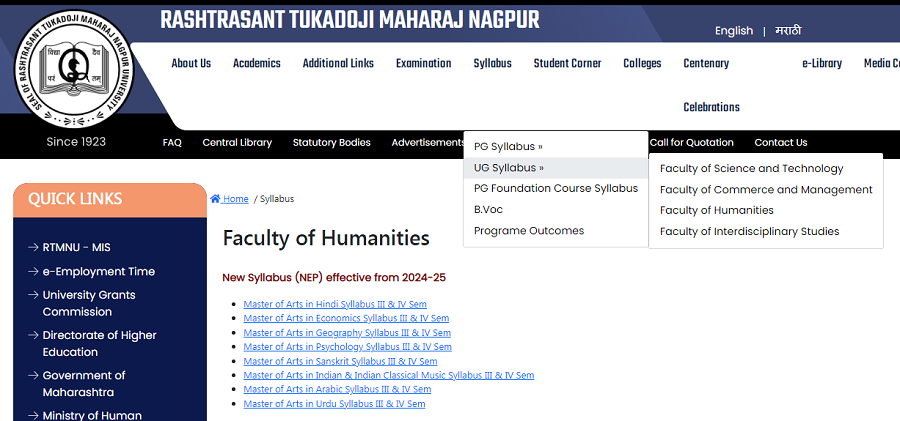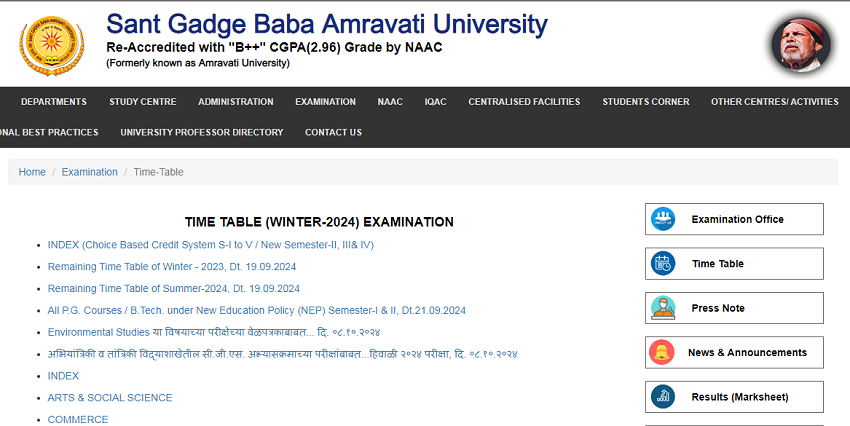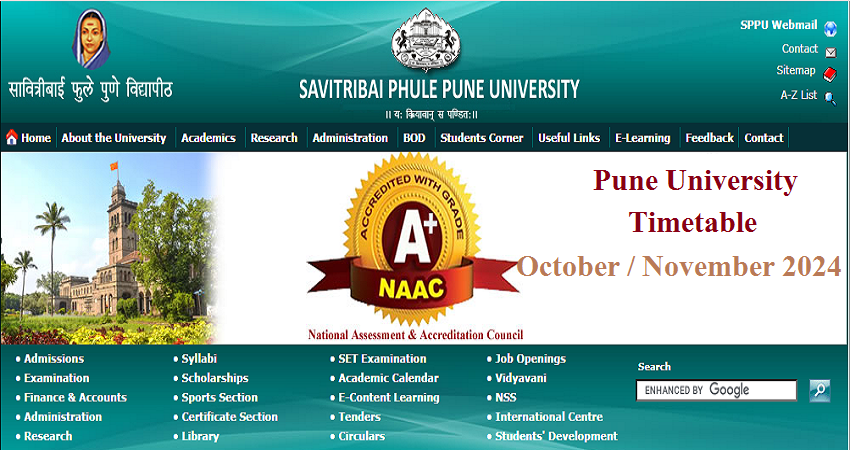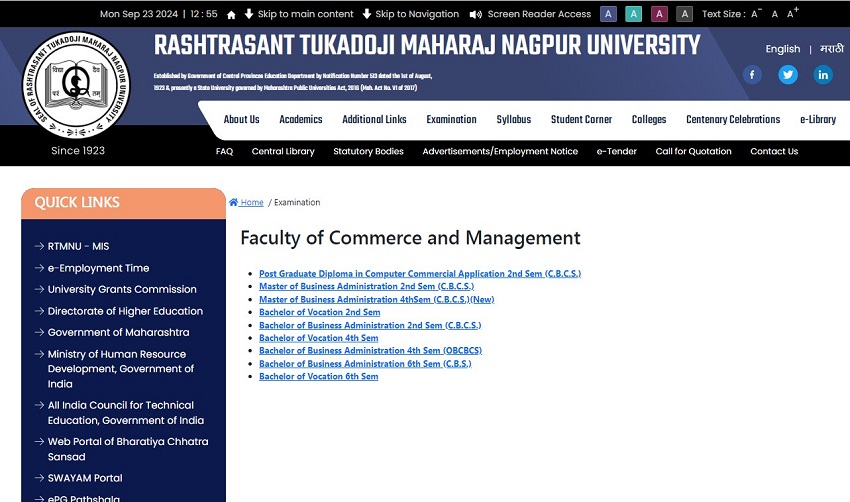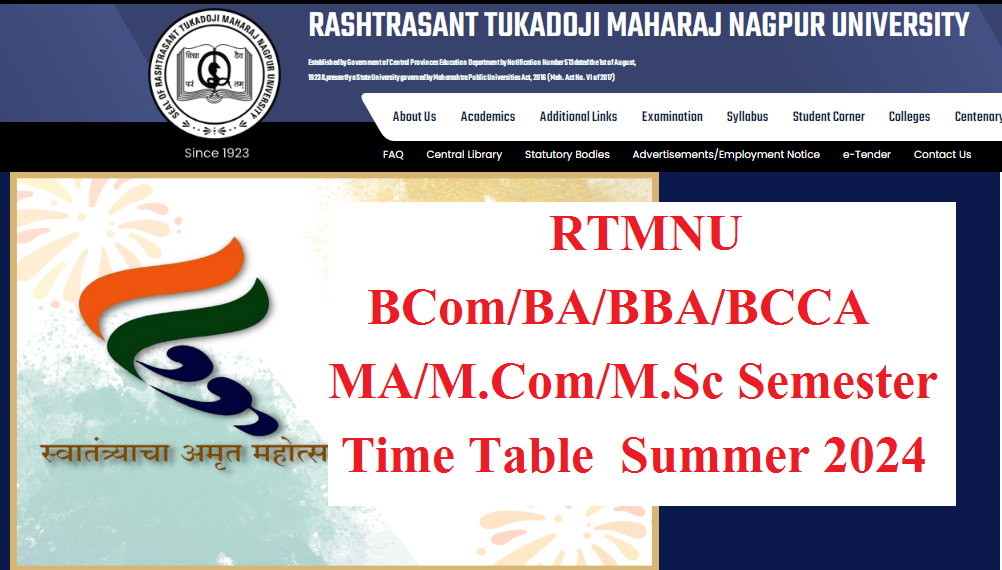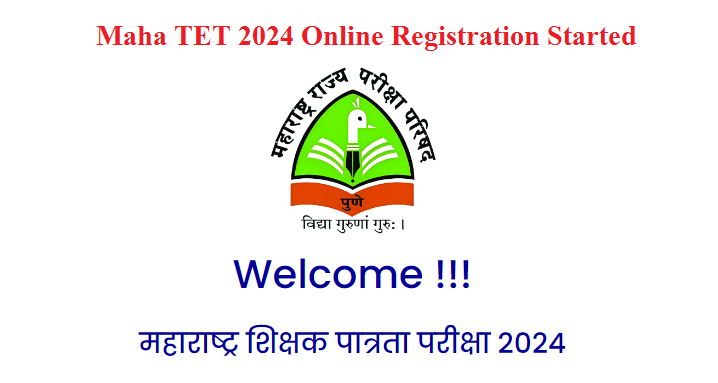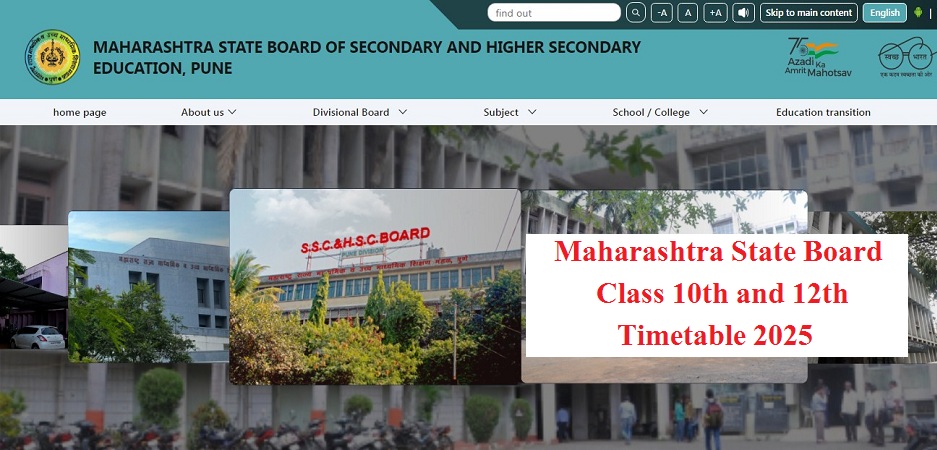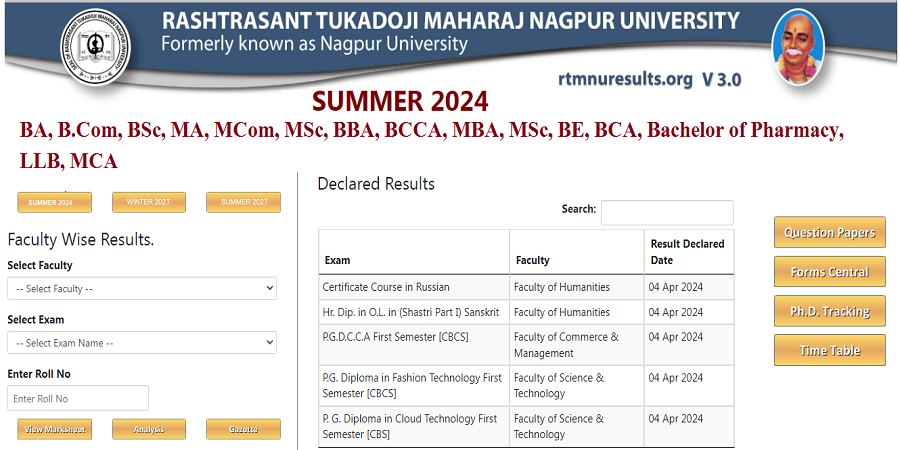MAHARASHTRA UNIVERSITY OF HEALTH SCIENCES NASHIK
MAHARASHTRA UNIVERSITY OF HEALTH SCIENCES NASHIK
CURRICULUM
POSTGRATUATE MEDICAL EDUCATION
IN MICROBIOLOGY

MAHARASHTRA UNIVERSITY OF HEALTH SCIENCES NASHIK
DRAFT CURRICULUM FOR POSTGRADUATE COURSE
M.D. (MICROBIOLOGY)
MAHARASHTRA UNIVERSITY OF HEALTH SCIENCES NASHIK : The aim of this course is to train the students of Medicine in the field of Medical Diagnostic Microbiology. Knowledge and practical skills shall be acquired by the candidates in the sub-specialities of Bacteriology including Mycobacteriology, Virology, Parasitology, Immunology, Serology & Mycology so as to be able to deal with diagnosis and prevention of infectious diseases in the community. They will be trained in basic research methodology including molecular biology so that they are able to conduct fundamental and applied research. They will also be trained in teaching methods so that they can take up teaching assignments.
GOAL:
The goal of the postgraduate medical education shall be to produce a competent specialist and Medical teacher:
Who shall recognize the health needs of the community and carry out professional obligations ethically in keeping with the objectives of the national health policy; • Who shall have mastered most of the competencies, pertaining to Medical diagnostic Microbiology that are required to be practiced at the secondary and the tertiary levels of the health care delivery system; • Who shall be aware of the contemporary advances and developments in the field of medical and diagnostic Microbiology • Who shall have acquired the spirit of scientific inquiry and is oriented to the
principles of research methodology and epidemiology • Who shall have acquired the basic skills of teaching of the medical and paramedical professionals.
EDUCATIONAL OBJECTIVES:
KNOWLEDGE:
At the end of the course the students shall be able to:
1.State and explain the clinical features, etiology, pathogenesis and methodsof laboratory diagnosis of infectious diseases and apply that knowledge in the treatment, prevention and control of communicable diseases caused by
micro-organisms.
2.State and explain the principles of immunity and immunological phenomenon which help to understand the pathogenesis, laboratory diagnosis of infectious and non-infectious diseases.
3. Establish and practice “laboratory medicine” for diagnosis of infectious diseases in hospitals and community in the field of bacteriology, parasitology, virology, mycology, serology and immunology in the light of
clinical findings.
4. Organize the prevention and control of communicable diseases in the community.
5. Understand and practice the principle of prevention and control of health care associated infections and rational antibiotic policy.
6. State the recent advances in the field of Medical Microbiology and apply this knowledge in understanding aetiopathogenesis and diagnosis of diseases caused by micro-organisms.
7. Carry out fundamental or applied research in the branches of medicine involving microbiological work.
8.Develop specialization in any of the above subspecialities.
9. Undertake teaching assignments in the subject of medical Microbiology.
(B) Skills
At the end of the course the student shall be able to
1.Plan the laboratory investigations for the diagnosis of infectious diseases
2.Perform laboratory procedures to arrive at the etiological diagnosis of infectious diseases caused by bacteria, fungi, viruses and parasites including the drug sensitivity profile.
3.Perform and interpret immunological and serological tests.
4.Operate routine and sophisticated instruments in the laboratory.
5. Develop microteaching skills and Pedagogy
6. Successfully implement the chosen research methodology
MAHARASHTRA UNIVERSITY OF HEALTH SCIENCES NASHIK
COURSE CONTENT (SYLLABUS)
DURATION OF COURSE:
The minimum period of training shall be three calendar years and the candidates can be admitted to this training after their full registration with the Medical Council. No exemption shall be given from this period of training of three years either for doing housemanship or for any other experience or diploma.
TRAINING PROGRAM:
The candidates joining the course must work as full time residents during the whole period of their postgraduate training. They will be required to attend a minimum of 80% of training period. Candidate shall be given full time
responsibility and assignments and their participation in all facets of the educational process assured.
Postgraduate students must maintain a record book of the work carried out by them and the training undergone by them during the period of training. These record books shall be checked and assessed by the faculty.
TEACHING /LEARNING METHODS:
Learning in M. D. (Microbiology) will essentially be self-learning.
Following teaching-learning methods shall be followedGroup teaching sessions:
• Journal review
• Subject seminar presentation
• Group discussion
• Slides seminars
• Clinical case presentations pertaining to infectious diseases
• Presentation of the findings of an exercise on any of the sub-specialities
• Participation in CME programs and conferences
Hands on experience (practical training)
Practical training shall be imparted by posting the students in various subspecialities (sections) as detailed in the intrinsic and extrinsic rotation.
Student shall be actively involved in day to day working of all the sections. He/she will be trained under the guidance of teachers in all the aspects of Clinical Microbiology and applied aspects of laboratory medicine including
collection and transport of specimens, receiving of samples, preparation of requisite reagents, chemicals, media and glassware, processing of specimens, performing required antimicrobial susceptibility testing and reporting on the
specimens, interpretation of results, sterilization procedures, bio-safety precautions, infection control practices, maintenance of equipments, record keeping and quality control in Microbiology. Suggested schedule of rotation:
Intrinsic rotation:
1. Bacteriology(Aerobic and anaerobic) 6 months
2. Mycobacteriology 3 months
3. Hospital infection surveillance 3 months
4. Serology/Immunology 6 months
5. Mycology 3 months
6. Virology/HIV 3 months
7. Parasitology 3 months
8. Clinical Microbiology(OPD) 2 months
9. Molecular Diagnostics 1 month
Extrinsic rotation:
Clinical Pathology 3 months
*Elective posting 3 months
Total 36 months
Emergency duty:
Student shall be posted for managing emergency laboratory services in
Microbiology. He/she will deal with all the emergency investigations in
Microbiology.
MAHARASHTRA UNIVERSITY OF HEALTH SCIENCES NASHIK
Training in research methodology:
Training in research methodology shall be imparted by planning of a research project by the student under the guidance of a recognized guide to be executed and submitted in the form of a dissertation.
The dissertation is aimed at training the candidate in research methods and techniques. It will include identification of a research question, formulation of a hypothesis, search and review of relevant literature, getting acquainted with
recent advances, designing of research study, collection of data, critical analysis of the results and drawing conclusions.
The topic shall be communicated to the university within six months of registration and at least 12 months should be spent on the research project. The dissertation shall be completed and submitted by the student six months
before appearing for the final university examination.
Teaching experience:
Student shall be actively involved in the teaching of undergraduate students. He/she will be trained in teaching methods and use of audiovisual aids.
BROAD AREAS OF STUDY
General Microbiology; Systematic Bacteriology, Mycology, Virology, Parasitology; Serology,Immunology, molecular diagnostics and Applied Clinical Microbiology including recent advances in Microbiology.
GENERAL MICROBIOLOGY
1. History and pioneers in Microbiology
2. Microscopy
3. Morphology of bacteria and other micro-organisms.
4. Nomenclature and classification of microbes.
5. Growth and nutrition of bacteria.
6. Bacterial metabolism.
7. Sterilization and disinfection.
8. Biomedical waste disposal
9. Bacterial toxins.
10. Bacterial antagonism: Bacteriocins.
11. Bacterial genetics, gene cloning.
12.Antibacterial substances used in treatment of infections and drug resistance
in bacteria.
13. Bacterial ecology-normal flora of human body, hospital environment, air,
water and milk
14.Host parasite relationship.
15.Quality control and Quality Assurance in Microbiology.
16. Laboratory Biosafety
17. Health care associated infections- prevention and control
IMMUNOLOGY AND APPLIED ASPECTS
1. The normal immune system.
2. Innate immunity.
3. Antigens.
4. Immunoglobulins.
5. Complement.
6. Antigen and antibody reactions.
7. Hypersensitivity.
8. Cell medidated immunity.
9. Immunodeficiency.
10.Autoimmunity.
11.Immune tolerance.
12.Transplantation immunity.
13.Tumour immunity.
14.Prophylaxis and immunotherapy
15. Measurement of immunity.
16. Immunity and immunopathogenesis of specific infectious diseases
17. Molecular Biology Techniques. For e.g. PCR, DNA probes.
MAHARASHTRA UNIVERSITY OF HEALTH SCIENCES NASHIK
SYSTEMATIC BACTERIOLOGY
1. Isolation, description and identification of bacteria. The epidemiology, pathogenesis, antigenic characteristics and laboratory diagnosis of disease caused by them
2. Staphylococcus and Micrococcus; Anaerobic Gram positive cocci.
3. Streptococcus and Lactobacillus.
4. Neisseria, Branhamnella and Moraxella.
5. Corynebacterium and other coryneform organisms.
6. Bacillus: the aerobic spore-bearing bacilli.
7. Clostridium: the spore-bearing anaerobic bacilli.
8. Non-sporing anaerobes
9. The Enterobacteriaceae.
10. Vibrios, Aeromonas, Plasiomonas, Campylobacter and Spirillum,H.pylori
11. Erysipelothrix and Listeria
12.Pseudomonas.
13. Chromobacterium, Flavobacterium, Acinetobacter and Alkaligens.
14.Pasteurella, Francisella.
15.Haemophilus and Bordetella.
16. Brucella.
17. Mycobacteria.
18.The spirochaetes.
19.Actinomyces, Nocardia and Actinobacillus.
20. Mycoplasmatales: Mycoplasma, Ureaplasma and Acholeplasma.
21. Rickettsiae.
22. Chlamydiae.
23. Emerging bacterial pathogens.
VIROLOGY
1. The nature of viruses
2. Classification of viruses
3. Morphology :virus structure
4. Virus replication
5. The genetics of viruses
6. The pathogenicity of viruses
7. Epidemiology of viral infections
8. Vaccines and antiviral drugs
9. Bacteriophages
10.Pox viruses
11.Herpes viruses
12. Vesicular viruses
13.Togaviridae
14. Bunyaviridae
15.Arenaviridae
16. Marburg and Ebola viruses
17. Rubella virus
18.Orbi viruses
19.Influenza virus
20. Respiratory disease: Rhinoviruses, adenoviruses, corona viruses
21.Paramyxoviridae
22. Enteroviruses : Polio, Echo, Coxsackie viruses
23.Other enteric viruses
24.Hepatitis viruses
25. Rabies virus
26.Slow viruses
27.Human immunodeficiency viruses
28.Oncogenic viruses
29.Teratogenic viruses
30. Viruses of gastroenteritis
31.Prion diseases
32. Emerging viral infections – SARS, Avian influenza
PARASITOLOGY
1.Protozoan parasites of medical importance : Entamoeba, Giardia, Trichomonas, Leishmania, Trypanosoma, Plasmodium, Toxoplasma, Sarcocystis, Cryptosporidium, Balantidium,Isospora, Cyclospora,Microsporidium etc.
2. Helminthology : All those medically important helminths belonging to Cestoda, Trematoda and Nematoda.
Cestodes : Diphyllobothrium, Taenia, Echinococcus, Hymenolepis, Dypyllidium, Multiceps etc.
Trematodes : Schistosomes, Fasciola, Gastrodiscoides, Paragonimus, Clonorchis, Opisthorchis etc.
Nematodes : Trichuris, Trichinella, Strongyloides, Ancylostoma, Nicator, Ascaris, Toxocara, Enterobius, Filarial worms, Dracunculus, etc.
3. Ectoparasites : Common arthropods and other vectors viz.,Mosquito, Sandfly, Ticks, Mite, Cyclops.
MYCOLOGY
1. The morphology and reproduction of fungi and antimycotic agents
2. Classification of fungi
3. Contaminant and opportunistic fungi
4. Fungi causing superficial mycoses
5. Fungi causing subcutaneous mycoses
6. Fungi causing systemic infections
7. Antifungal agents
MAHARASHTRA UNIVERSITY OF HEALTH SCIENCES NASHIK
APPLIED CLINICAL MICROBIOLOGY
1. Epidemiology of infectious diseases
2. Hospital acquired infections
3. Infections of various organs and systems of the human body
4. Molecular genetics as applicable to Microbiology
5. Automation in Microbiology
6. Rapid diagnostic techniques for microbial diseases.
7. Vaccinology : principle, methods of preparation, administration of vaccines
8. Outbreak investigations & disaster management
9. Biological warfare
PRACTICALS (SKILLS)
BACTERIOLOGY
Must acquire:
1. Care and operation of Microscopes viz. Light, Dark ground, Phase contrast, Inverted, Fluorescent microscopes.
2. Preparation of stains viz. Gram’s, Albert’s, Ziehl- Neelson and other special stains – performing of staining and interpretation of stained smears.
3. Washing and sterilization of glassware including plugging and packing.
4. Operation of incubator, autoclave, hot air oven, inspissator, distillation plant, filters like Seitz and membrane and sterility tests.
5. Care and maintainance of common laboratory equipments like water bath,
centrifuge, refrigerators, incubators etc.
6. Preparation and pouring of liquid and solid media – Nutrient agar, Blood agar, MacConkey agar, sugars, TSI agar, Robertson’s cooked meat,
Lowenstiein- Jensen’s, selective media.
7. Preparation of reagents – oxidase, Kovac, etc.
8. Tests for beta-lactamases including ESBLs.
9. Collection of specimens for Microbiological investigations such as blood, urine, throat swab, rectal swab, stool, pus, OT specimens.
10. Preparation, examination and interpretation of direct smears from clinical specimens,viz. Sputum for AFB – ZN & auramine O, slit smears for M..leprae,-ZN stain, conjunctival smear for Chlamydiae – Giemsa/Iodine.
11. Techniques of anaerobiosis – Gaspack system,anaerobic jars-evacuation & filling with H2, CO2
12. Identification of bacteria of medical importance upto species level (except anaerobes – upto generic level)
13. Quantitative analysis of urine by pour plate method and semiquantitative analysis by standard loop test for significant bacteriuria.
14. Plating of clinical specimens on media for isolation, purification identification and quantitation.
15. Tests for motility: hanging drop, Craige’s tube, dark ground microscopy for Spirochaetes – Treponema & Leptospira.
16.In-vitro toxigenicity tests – Elek test, Nagler’s reaction
17.Special tests – Bile solubility, chick cell agglutination, sheep cell haemolysis, niacin and catalase tests for mycobacterium, satellitism, CAMP test, catalase test and slide agglutination tests, and other as applicable t
identification of bacteria upto species level
18. Preparation of antibiotic discs; performance of antimicrobial susceptibility testing by Kirby-Bauer disk diffusion method; estimation of Minimum inhibitory /Bactericidal concentrations by tube/plate dilution methods.
Tests for drug susceptibility of Mycobacterium tuberculosis
19.Skin tests like Mantoux, Lepromin etc.
20.Testing of disinfectants- Phenol coefficient and ‘in use’ tests.
21. Quality control of media reagents etc. and validation of sterilization procedures.
22.Aseptic practices in laboratory and safety precautions.
23.Disposal of contaminated material like cultures.
24. Bacteriology of food, water, milk, air
25. Maintenance of stock cultures.
Desirable to acquire:
1. Care and breeding of laboratory animals viz. Mice, rats, guinea pigs and
rabbits.
2. Techniques of withdrawal of blood from laboratory animals includingsheep.
3. Inoculation of infective material in animals by different routes.
4. Animal pathogenicity /toxigenicity tests for C.diphtheriae, Cl.tetani, S. pneumoniae, S.typhimurium, K. pnumoniae etc.
5. P erformance of autopsy on animals.
6. Isolation of plasmids and Conjugation experiments for transfer of drug resistance
7. Serum antibiotic assays eg. Gentamicin
8. Phage typing for staphylococci, S.typhi etc.
9. Bacteriocine typing eg. Pyocine, Proteocin etc.
10. Enterotoxigenicity tests like rabbit ileal loop, intragastric inoculation of mouse, Sereny’s test.
11. Mouse foot pad test for M.leprae
IMMUNOLOGY/ SEROLOGY
1. Collection of blood by venepuncture, seperation of serum and preservation of serum for short and long periods.
2. Preparation of antigens from bacteria or tissues for widal, Weil-Felix, VDRL, etc. and their standardisation.
3. Preparation of adjuvants like Freund’s adjuvant.
4. Raising of antisera in laboratory animals.
5. Performance of serological tests viz. Widal, Brucella tube agglutination,
indirect haemagglutination, VDRL, Paul-Bunnel, Rose-Waaler, IFA.
6. Immunodiffusion in gels, counter immunoelectrophoresis- visualization and
interpretation of bands.
7. Performance and interpretation of Enzyme linked immunosorbant assay.
8. Latex and staphylococcal co-agglutination tests.
Desirable to acquire:
1. Leucocyte migration inhibition test.
2. T-cell rosetting.
3. Flow Cytometry
4. Radial immunodiffusion.
5. Immunoelectrophoresis.
6. Neutrophil phagocytosis.
MAHARASHTRA UNIVERSITY OF HEALTH SCIENCES NASHIK
MYCOLOGY
Must acquire:
1. Collection of specimens for mycology.
2. Direct examination of specimens by KOH, Gram, Kinyoun’s, Giemsa,
Lactophenol cotton blue stains.
3. Examination of histopathology slides for fungal infections.
4. Isolation and identification of pathogenic yeasts and moulds and recognition
of common laboratory contaminants.
5. Special techniques like Wood’s lamp examination, hair baiting, hair
perforation, paraffin baiting and slide culture.
6. Maintenance of stock cultures.
7. Animal pathogenecity tests viz. Intracerebral and intraperitoneal inoculation
of mice for cryptococcus.
PARASITOLOGY
Must acquire:
1. Examination of faeces for parasitic ova and cysts etc. by direct and
concentration methods (salt floatation and formol – ether methods)and
complete examination for other cellular features.
2. Egg counting techniques for helminths.
3. Examination of blood for protozoa and helminths by wet mount, thin and
thick stained smears.
4. Examination of other specimens for e.g. urine, C.S.F., bone marrow etc. for
parasites.
5. Histopathology sections – examination and identification of parasites.
6. Performance of stains – Leishman, Giemsa, Modified Acid Fast, Toluidine
Blue O.
7. Identification of common arthropods and other vectors viz. Mosquito, sand
fly, ticks, mite and cyclops.
8. Collection of specimens.
9. Preservation of parasites – mounting, fixing, staining etc.
Desirable to acquire:
1. In-vitro culture of parasites like entamoeba, leishmania, P.falciparum.
2. Maintainance of toxoplasma gondii in mice.
3. Preparation of media – NIH, NNN etc.
4. Copro-culture for larva of hook worms.
5. Antigen preparation viz. Entamoeba , Filarial , Hydatid for serological tests
like IHA and skin test like Casoni’s .
6. Permanent staining techniques like iron haematoxylin
VIROLOGY
Must acquire:
1. Preparation of glassware for tissue culture(washing, sterilization)
2. Preparation of media like Hanks, MEM.
3. Preparation of clinical specimens for isolation of viruses.
4. Serological tests-ELISA and rapid tests for HIV, RPHA for HbsAg,
Haemagglutination inhibition for influenza, AGD and
couterimmunoelectrophoresis for detection of viral antigens or antiviral
antibodies.
5. Chick embryo techniques- inoculation and harvesting.
6. Handling of mice, rats, guinea pigs, rabbits for collection of blood,
pathogenicity test etc.
Desirable to acquire:
1. Preparation of Monkey Kidney Cells (Primary) maintenance of continuous
cell lines by subcutures. Preservation of cell cultures.
2. Recognition of CPE in tissue cultures.
3. Performance of haemadsorption, haemagglutination, immunofluorescence,
neutralization tests for identification of viruses.
MAHARASHTRA UNIVERSITY OF HEALTH SCIENCES NASHIK
SUGGESTED READING:
BOOKS:
Reference books (Please refer the most recent edition)
1. Topley and Wilson’s Microbiology and Microbial infections. 8 volumes 2005, 10th edition
2. Color Atlas and Textbook of Diagnostic Microbiology: Elmer W Koneman -2006, 6th edition
3. Mandell, Douglas and Bennett’s Principles and Practice of Infectious Diseases -2004, 6th edition
4. Microbiology and Clinical Practice: Shanson-1999, 3rd edition
5. Immunology: Janis Kuby- 2003.
6. Basic Clinical Immunology. Fudenburg, Stites, Caldwell, Weils.
7. Control of Hospital Infection- A practical handbook (most recent edition)-2000, 4th edition
8. Bailey and Scott’s Diagnostic Microbiology.
9. Text book of Parasitology. Chatterjee K.D.
10. Microbiology in Clinical Practice. Shanson D.C.
11. Beaver’s Parasitology
Textbook
Further Reading
1. Mycology – Rippons
2. Essentials of Immunology- Roitt
3. Virology- Clinical Virology by Rich
4. Gradwohl’s Clinical Laboratory Methods and Diagnosis.
5. Biochemical tests for the Identification of Medical BacteriaMacFaddin JF
6. Manual of Clinical Microbiology- ASM press
Journals
1. Indian Journal of Medical Microbiology
2. Clinical Microbiology Reviews
3. Journal of Clinical Microbiology
4. Journal of Medical Microbiology
5. Journal of AIDS
6. Journal of Hospital Infection
7. Indian Journal of Tuberculosis and Lung Diseases.
8. Indian Journal of Medical Research
9. JAAC
10.Parasitology Today
11.Journal of Infection
12.Infection Control and Hospital Epidemiology
13.Indian Journal of Tuberculosis
14.Journal of Associations of Physicians of India
15.Lancet-Infectious Diseases
16.Emerging Infectious Diseases-online
17.New England Journal of Medicine- online
18.British Medical Journal
19.Scandinavian Journal of Infectious Diseases
20. ICMR Bulletin
21. AIDS Research & Review
22. MMWR
23. Tubercle
24. WHO Bulletin
25. Journal of American Medical Association
26. Paediatric infectious diseases
27. Indian Journal of Leprosy
28. International Journal of Leprosy
29. Immunology
30. American journal of Epidemiology
Important Websites:
1. Center for Disease Control -www.cdc.gov
2. World Health Organization- www.who.int
3. Infectious Disease Society of America- www.idsociety.org
4. United Nations Program on HIV/ AIDS- www.unaids.org
5. Johns Hopkins Infectious Diseases- www.hopkins-id.edu
6. National Library of medicine- www.pubmed.com
7. MD Consult- www.mdconsult.com
8. Global Infectious Disease epidemiology networkwww.gideononline.com
9. National AIDS Control Organization- www.nacoindia.org
10. Tuberculosis Research Centre- www.trc-chennai.org

